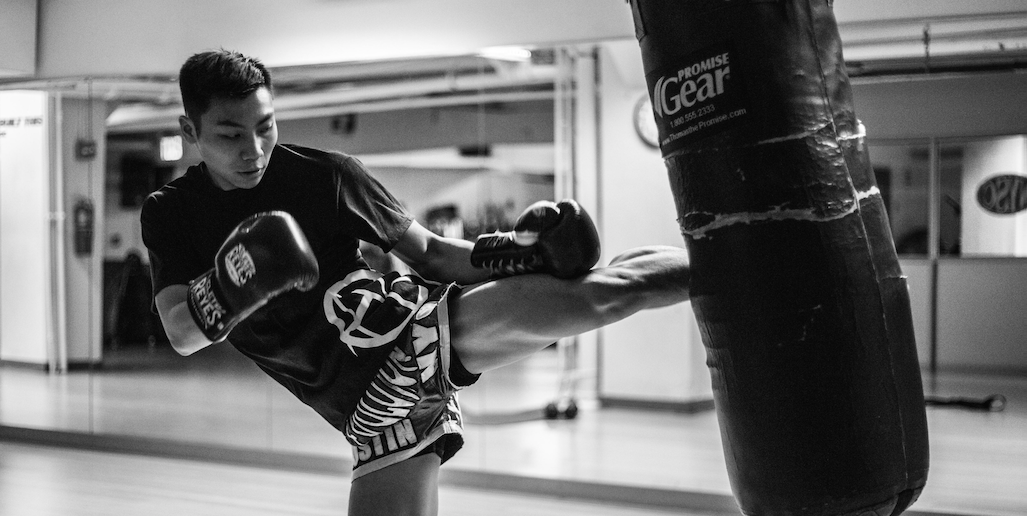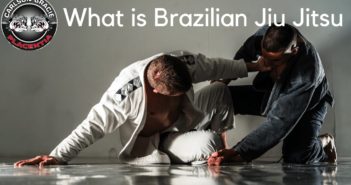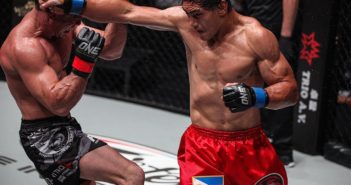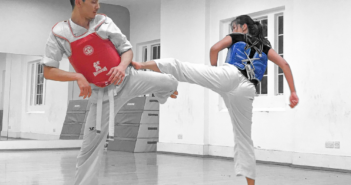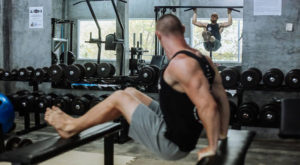
Monsoon’s Muay Thai & BJJ Gym
Rest, and recovery are critical components of any successful training program at an intensive martial arts training camp. In my experience it is a component under-utilised in intensive training environments. Students want to get the most out of their time, so push hard. In this article I discuss the ‘Essentials of Rest and Recovery at martial arts training camps’.
Rest to enhance performance
As a way to enhance performance rest and recovery is too often overlooked. Understanding the difference between rest and recovery and how to properly implement them both is the key. If you’re training 5-8 hours per day for 5-6 days a week, you have to consider how sustainable that is. Making the most out of your rest, and recovery time is essential. If you define rest as a combination of sleep, and time not training then the quality of your sleep, and the time you spend not training will be critical. With many full-time martial arts schools packing their timetables with morning, afternoon, and evening training sessions. How you sleep, and spend the time in-between these classes is even more important.
Recovery to enhance performance
Unlike rest, recovery is not doing nothing. Recovery is active, and refers instead to techniques employed to maximise and make more efficient body repairs.
“Hydration, nutrition, posture, heat, ice, stretching, self-myofascial release, stress management, compression, and time spent standing versus sitting versus lying down. Recovery is multifaceted and encompasses more than just muscle repair. Recovery involves chemical and hormonal balance, nervous system repair, mental state, and more”. – breakingmuscle.com
Systems of recovery
The systems of the body that need to recover include hormonal, neurological, and structural.
The Structural System: includes muscles, tendons, ligaments, and bones. Of these the muscles are the easiest to recover as they receive direct blood flow. Tendons, ligaments, and bones receive indirect blood flow and so will take longer to recover. As a result the they are more susceptible to overtraining. In my case I suffer particularly from tendonitis of both shoulders and elbows.
Students studying martial arts intensively and putting in training hours similar to that of professional athletes must be realistic. You will not have the resources, diet nor professional support that the pros will have therefore your goal should be consistency, staying injury free, and longevity. Setting your priorities and maximizing performance without putting your body through physical extremes is a strategy that will allow you to train longer, and harder.
This in my experience will get you closer to your goals. Lets face it most elite athletes not only have physical skill on their side, but also good genetics, and years of personal training and sacrifice. Going into a martial arts school all guns blazing too often leads to prolonged injury, repeated injury or even having to go home early. Some masters in traditional schools have archaic training methods. These regimes are not always suited to beginner students or older students. These training methods can and do lead to breakages that can be avoided.
The essentials of rest and recovery
Below are attainable essentials of rest and recovery that any martial arts student can incorporate into their training regime easily at very little cost.
1. Sleep
Quality sleep is essential and one of the most important times to recover. Adequate levels of sleep help to provide mental health, hormonal balance, and muscular recovery. Incorporating naps into your daily timetable is essential, and something to savour. My strategy was to get up for early morning training. Have breakfast and then take a short rest read or tidy up. After Lunch I’d have more time to get a good twenty to forty minute nap. You need to get enough sleep, when you are training 6-8 hours per day. Studies recommend between seven to ten hours for most athletes, I would definitely advocate aiming for the same.
The good thing about the kung fu schools, and the early morning starts is that by nine at night most people are exhausted and ready for quiet time. Why not aim to get to bed, and ready to sleep by 10:00pm, so when you start practice at 5am/6am you are raring to go. The internet has a lot of information claiming the benefits of this early to bed early to rise practice. Sound familiar? You’ll find a lot of studies backing up these claims, including proven research that has established sleep before 12pm is more effective than sleep after 12pm for the same duration. So get started, and create a good bed time routine.
2. Meditation
An essential component of many of the eastern martial arts systems, meditation is an important part of what you can expect to learn at a Traditional Chinese, or Japanese martial arts schools. Nevertheless this does not mean that it should be neglected by those training the modern combat sport martial arts. Visualisation techniques, and meditation practices can be used to not only bring the body back into balance, and heal but also improve focus, mental state, and relieve stress. Check out this article from Finnish BJJ competitor Jaan Hanson from the excellent blog Guard Nation.
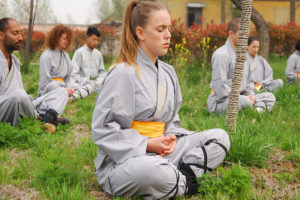
Bring the body back into balance by meditation
2. Hydration
Drinking enough water is critical to health, energy, recovery, and performance. Being conscious of your water intake will help brain functions, performance, energy levels, promote weight-loss, efficient nutrient intake, lower stress, prevent constipation and numerous other health problems. Water will help all of the body’s functions. I highly recommend you set a target of drinking 3-4 litres per day minimum. Training for prolonged periods takes it out of you. This is especially true when you are training outdoors in the sun, and heat for prolonged periods. The busiest times at martial arts schools are normally the summer. These tend to be the hottest times and times when hydration is even more important.
“A good rule of thumb for is to divide your body weight in half and drink at least an ounce per pound of body weight throughout a typical day (e.g., someone weighing 160 pounds should drink 80 ounces of water a day).” – www.healthline.com
If you want to check whether you are properly hydrated. All you need to do is check your pee. If it’s clear to pale yellow, you are considered hydrated. The darker and more colour it is the less hydrated you are and the more water you need to drink.
3. Nutrition and Supplements
How you eat will dictate whether your are harming or healing your body. If you’re not giving your body the right fuel its just the same as that time you mistakenly put diesel into your fathers petrol car. There will be no spark, hydraulics will lock, and there will be potential internal damage. Avoiding alcohol, and processed foods is the key. You should aim to eat clean, and balanced meals.
All inclusive food, tuition and accommodation
With some martial arts schools particularly in China they will provide food as part of their all-inclusive price. The truth is you will have very little control over its quality, and nutritional content. Even when you complain it may still be too oily, and or salty. This is particularly true if you’re attending or plan to attend one of the bigger, and cheaper kung fu schools in China.
“The biggest benefit of attending these all-inclusive school is two fold, firstly the price, and secondly that fact you do not need to prepare the food, cook, clean etc. So can focus fully on training.”
Nutritional optimisation
If you’re aiming of nutritional optimisation at a martial arts school providing meals, you’ll want to budget for additional foods, and snacks in order to up-grade your diet along with additional supplements to get the best results. Having healthy snacks is pretty easy in China, and Thailand. Here fruit and vegetables are cheap, so are nuts, seeds and berries. These can be your healthy snacks between training sessions.
Indeed when I first began training at my first kung fu school in China, Kunyu Mountain Shaolin Kung Fu Academy I’d often buy a big container of organic oats, and mix it with hot water, banana, rasins and or honey for breakfast. Eventually, I got to used to the Chinese style of breakfast, and enjoyed the millet (small yellow rice) spicing it up with some of the honey, rasins and banana rather than oats.
In the end with a little creativity you’ll have plenty of options based on your own taste and needs. When you book your training through StudyMartialArts.Org I can prepare and send you an essential supplements based on your budget. Here is a link to a previous article I wrote on what I consider to be two of the most important summer supplements that you can easily bring with you. Both are affordable and you can buy here in China or in advance of arriving at your chosen martial arts training camp.
If you require assistance purchasing quality protein powders and supplements in China you are welcome to drop me an email at david@studymartialarts.org – Please note however, those who book their training through StudyMartialArts.Org will get preference and special discounts.
4. Posture
Any martial arts master/ coach or instructor worth his or her salt will pay attention to posture, positioning, and stance as well as how strikes are delivered, and evaded. What you as a self-motivated practitioner must do is be conscious of your posture, mindful of how you are sitting, walking etc and when necessary incorporate preventative, and corrective exercises to even-out any physical imbalances brought on by training or a life time of bad habits.
In terms of recovery, bad posture is harmful and can lead to back or neck pain, and training injuries. This is often because one part of the body over compensates for another. Today joint mobility, and posture are well discussed through various training, and conditioning videos. Indeed there is some excellent youtube resources available free of charge should you need to take things into your own hands. Make sure if you’re lifting as part of a strength, and conditioning plan that you’re doing it correctly. Elliot Hulse and Alan Thrall are my favourite resources. For specific postural fixes Tom Merrick and Athlean-x are worth checking out depending on the issue you’re facing.
Luckily many of you reading this article will also be taking part in qigong, and taiji quan lessons as part of your training plan so these sessions can be considered as potentially something that will not only help posture but aid recovery, and balance out your hard physical training. This is because both of these practices require proper body alignment and mindfulness.
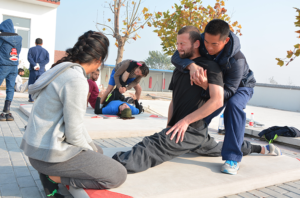
Power stretching taking students to their limits.
5. Stretching
At Kung fu schools in China or indeed any good martial arts school, stretching will be an important element of the training. Power stretching was without a doubt my least favourite class when learning kung fu in China. Not being particularly flexible or having a history of stretching meant that it was a class I struggled with. The phrase no pain, no gain comes to mind and when it comes to martial arts this is all to true.
When we stretch we create tension aligning collagen fibers in the connective tissues along the direction of the stretch. Pulling the muscle fibers in this way can be painful especially if you have neglected this type of training in the past. The aim of power stretching is to pull each muscle fiber out to its full length sarcomere by sarcomere, until the connective tissue takes up the remaining slack. When this occurs, it helps to realign any disorganised fibers in the direction of the tension. This lengthens the tissues and ligaments helping to rehabilitate scarred tissue back to health. The length of the entire muscle depends upon the number of stretched fibers. As a result stretching is a process requiring consistency dedication and all too often pain.
The benefit of stretching
The main benefit of stretching is increased flexibility and the increased chance of performing those high flashy kicks from the movies. Increased flexibility allows you to move well and remain pain free. Ideally you should include dynamic stretching in your warm-ups while saving static stretching for after workouts. Always stretch each area at least twice resting for a short period in between.
6. Myofascial Release
“Myofascial Release is a form of massage that uses techniques for stretching the fascia and releasing bonds between fascia, skin, muscles, and bones. It helps the body eliminate pain, increase range of motion and balance the body” – www.cssctr.com
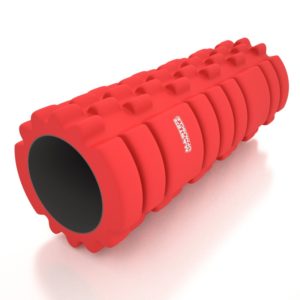
Foam roller
In China and Thailand there are numerous spas, clinics offering medical massages at affordable prices. Prices for Blind Massages and medical massages at hospitals and clincs start from 50 CNY up to 600 CNY for private clinics. The quality of these varies widely, so its good to explore, and use local knowledge to find the best. Massage is an important part of traditional Chinese Medicine, and active recovery. Chinese Health Massage (Tui Na) loosen joints, nourish the muscles and encourage the flow of blood and “chi”. Such massages release tension, and utilize acupressure points to help bring the body back into balance.
Self-Myofascial release
In my opinion there is nothing better than bringing the body back into balance after a hard weeks training with a good massage. However, to get the benefits its not always necessary to pay someone to do it. Tight muscles, and trigger points sometimes need assistance to return to healthy normal tissue. Foam rollers, peanuts and even a tennis ball can be used to get the best out of self-myofascial release. Check out this great article on foam rolling for further information.
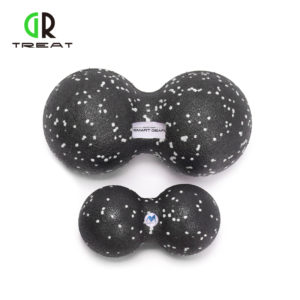
Peanut
7. Heat, Ice, and Compression
Heat, Ice and compression can be used not only for recovering from injuries but from particularly stressful training sessions. If you’re at a kung fu school in China making use of a good spar for steam rooms and hot and cold baths make a welcome weekend treat. Hydrotherapy using hot and cold showers at the training camp can also help.
Spending time focusing on rest and recovery can pay dividends beyond additional training time. It’s not only a performance enhancement. It can form part of your reward system for the hard work you’ve done through the week bringing the body back into balance.
If you carefully dedicate the correct time and attention to sleep, hydration, and nutrition will significantly lower your potential for injury. You will be more consistent in your training and your output ability will increase as your, recovery times decrease.
“Ignoring your own body comes with its own perils. I see it all too often at martial arts schools where students allow their ego, and over enthusiasm to get in the way. Ultimately, forcing them to take time off due to injury, burnout, or worse. Don’t be that guy or girl. Stay healthy, stay consistent, and make the most of your training time.” – David Kelly

